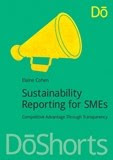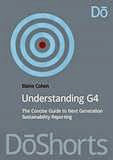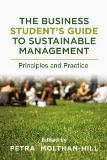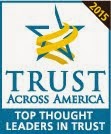Just as materiality has become the buzzword of all things sustainability, and sectors have become the primary lens through which we view corporate sustainability performance, CorporateRegister.com has published a set of resources which provide a fabulous primer in material issues by sector. The CR Sector Overview series covers 11 sectors so far, (take a look at CorporateRegister.com Publications page to see if your sector is covered) and over the coming weeks, I will be blogging about each one. The CR Sector Overviews are free to subscribing members of CorporateRegister.com but I have kindly been provided with a full set, so that I can share some of my own insights about each one with the CSR Reporting Blog readers. So thanks to CorporateRegister.com for sharing these valuable resources! For those who are not members and wish to purchase a copy, you can do so via the CorporateRegister.com website.
(Disclosure: I do not earn commission or receive any compensation on memberships or sales of these publications. I believe CorporateRegister.com is a fantastic resource, which I use almost daily (I am a member). My interest in sharing is simply to alert, CSR and Sustainability professionals to resources which I find interesting and useful, and hopefully be of some help.)
Each CR Sector Overview follows the same format:
- An overview of the sector and what it does, including a list of the largest global publicly traded companies in the sector;
- A list of the Material Sustainability Issues with explanations and examples, supported by guidance on what to disclose in a CSR or Sustainability Report;
- An overview of sustainability reporting guidelines relevant for the sector; and
- A set of useful resources for more information.
The forestry and paper sector is a one of the top reporting sectors globally and has delivered over 1,200 reports since the start of the reporting revolution. Employing apparently, over 14 million people around the world, with sales of over US$365 billion (for the top 100 companies in the sector, according to a report from PwC), this sector has far-reaching impacts on global sustainability. The sector can be broadly split into two types of companies: those that manage forests and then sell logs to other companies; and those that manage forests and use the wood to manufacture other things, such as pulp and paper.
This is how the CorporateRegister.com CR Sector Overview introduces material sustainability issues for the forestry and paper sector:
"For many years forestry was seen as a relatively benign industry. But from the
early 1990s onwards, when world attention gradually began focusing on the
alarming rate at which the Amazon rainforest was being cleared, that perception
began to change.
Although much of the slash and burn deforestation in the Amazon region was
for crop cultivation and cattle grazing, plenty of it was also for logging – and
campaigners quickly latched on to large corporates as a focus for their worldwide
anti-logging campaigns.
The forestry and paper sector has therefore attracted significant criticism over
the past decade, generally connected with the cutting down of trees in old
growth forest, either by the companies themselves or by suppliers from which
they source their wood and pulp. Chief concerns about deforestation surround
the negative implications of forest loss for climate change and biodiversity."
Nine material sustainability issues are listed, plus an additional 4 issues which largely apply to the sector and, interestingly as well, three additional "upcoming" issues which should be on the radar of any company in this sector. Of course, I cannot tell you what all these are, but they probably won't surprise anyone who knows the sector well. For those who don't, it's a highly useful summary.
The CR Sector Overview lists the top 20 companies worldwide in this sector. Here are the top five:
And here is my quick review of the top five reports:
The first thing to say about these reports is that they are all truly informative and make for extremely interesting reading. Anything you want to know about forestry is captured, and usually in very nice designs and infographics from the lifecycle of a working forest, to the process of paper recycling to the use of materials in the sector. Overall the quality of reporting is high, demonstrating commitment, continuity and a large degree of credibility.
Materiality, as you might expect, is treated somewhat differently in each report, even though these companies are broadly operating in the same ballpark.
Stora Enso and Svenska Cellulosa (SCA) have full blown materiality matrixes, the former showing the top material issue to be: Involvement and value sharing in
local communities while the latter has identified: Human rights issues, including child labor and
forced labor. International Paper lists a number of issues, without prioritizing them, and they are: Business ethics, Employee safety, Energy, Fiber sourcing, use and disposal, Financial performance and Natural resources. Kimberly Clark does not list material issues but says: "In 2013, we will be giving considerable attention to a materiality
analysis, with the expectation that we will apply these findings in
our sustainability reporting." And Oji Japan does not refer to material issues.
Surprisingly, the most material issues selected by those who selected material issues are not particularly sector-dominated. For example, SCA's report lists 30 material issues, and forestry management is only number 17 on the list - all the first 16 being rather generic issues that could apply to any company. Stora Enso lists 25 material issues and sustainable forestry is only number 12.
This tends to reinforce my view that there needs to be a minimum requirement of sustainable practices across the board for all companies, irrespective of sector. I think this is where the new G4 framework could be improved. While materiality focus is absolutely correct and most meaningful in terms of disclosure and reporting priority, it's inconceivable that any company would not be able to confirm minimum standards of corporate accountability against a set of core issues, including resource consumption, human rights, occupational health and safety, anti-corruption and a few others, as these paper and forestry sector companies have tended to do. It will be interesting to note what happens to these lists of material issues if and when the reporting companies in this sector decide to transition to G4. I'll bet the lists of 25 - 30 material issues suddenly get rather shorter!
Some highlights and interesting things I picked up from these reports:
International Paper - the largest paper company
The best thing about this report is the clarity of reporting against multi-year sustainability goals to 2020 - 10 environmental goals, one people goal (safety) and one community goal. In each area, International Paper both states the goal and progress made in 2012, as well as challenges to meeting the goal.
International Paper says that in the U.S., more than 90% of their fiber supply comes from private forests that are often small and family owned. A challenge here is persuading these smallholders to obtain forest management certification, due to the costs involved. International Paper has supported a program to enable collective certification, thereby reducing the cost burden on individual foresters. Apparently, only 10 percent of the world's forests are certified, so International Paper's insistence on expanding the presence of certification is a positive thing, especially since the company purchases over 68 million tons of wood fiber each year.
Overall, environmental impacts dominate this report, taking up over half the content, with just a few pages dedicated to charitable work and philanthropy and occupational safety and other aspects of employment practices relating to the company's more than 69,000 employees. Occupational safety gets priority attention, as this sector is known for high-safety risk, and indeed, in International Paper, a total of 40 employees and 11 contractors suffered life-changing injuries, including three who were killed. Treatment of safety by International Paper is well done, in my view. The issues are clearly stated, and actions to address the issues are described including a new LIFE initiative (Life-changing Injury and Fatality Elimination) which maintains focus on different areas of employee safety. The company also introduced a ban on cell-phone use while driving a motor vehicle. Wonder how effective that is? But it's certainly a good move. I think I might even try it myself :)
Kimberly Clark - touching customers
Surprisingly, the most material issues selected by those who selected material issues are not particularly sector-dominated. For example, SCA's report lists 30 material issues, and forestry management is only number 17 on the list - all the first 16 being rather generic issues that could apply to any company. Stora Enso lists 25 material issues and sustainable forestry is only number 12.
This tends to reinforce my view that there needs to be a minimum requirement of sustainable practices across the board for all companies, irrespective of sector. I think this is where the new G4 framework could be improved. While materiality focus is absolutely correct and most meaningful in terms of disclosure and reporting priority, it's inconceivable that any company would not be able to confirm minimum standards of corporate accountability against a set of core issues, including resource consumption, human rights, occupational health and safety, anti-corruption and a few others, as these paper and forestry sector companies have tended to do. It will be interesting to note what happens to these lists of material issues if and when the reporting companies in this sector decide to transition to G4. I'll bet the lists of 25 - 30 material issues suddenly get rather shorter!
Some highlights and interesting things I picked up from these reports:
International Paper - the largest paper company
The best thing about this report is the clarity of reporting against multi-year sustainability goals to 2020 - 10 environmental goals, one people goal (safety) and one community goal. In each area, International Paper both states the goal and progress made in 2012, as well as challenges to meeting the goal.
International Paper says that in the U.S., more than 90% of their fiber supply comes from private forests that are often small and family owned. A challenge here is persuading these smallholders to obtain forest management certification, due to the costs involved. International Paper has supported a program to enable collective certification, thereby reducing the cost burden on individual foresters. Apparently, only 10 percent of the world's forests are certified, so International Paper's insistence on expanding the presence of certification is a positive thing, especially since the company purchases over 68 million tons of wood fiber each year.
Overall, environmental impacts dominate this report, taking up over half the content, with just a few pages dedicated to charitable work and philanthropy and occupational safety and other aspects of employment practices relating to the company's more than 69,000 employees. Occupational safety gets priority attention, as this sector is known for high-safety risk, and indeed, in International Paper, a total of 40 employees and 11 contractors suffered life-changing injuries, including three who were killed. Treatment of safety by International Paper is well done, in my view. The issues are clearly stated, and actions to address the issues are described including a new LIFE initiative (Life-changing Injury and Fatality Elimination) which maintains focus on different areas of employee safety. The company also introduced a ban on cell-phone use while driving a motor vehicle. Wonder how effective that is? But it's certainly a good move. I think I might even try it myself :)
Kimberly Clark - touching customers
This is one of the two companies out of the top 5 in this sector which is fully consumer facing, with a range of well-known brands. This report, while not declaring a GRI Application Level, notes the GRI Indicators against disclosures throughout the report. Actually, K-C does report against the majority of GRI Indicators, and this is a fairly extensive disclosure.
The report is mainly internally focused - on K-C's direct impacts within its operation on its people and on its direct impacts on the environment including elements of the supply chain. However, it is perhaps a little surprising, especially given that this report is entitled " Leading the world in essentials for a better life", that little attention is given in this report to how K-C's products are used and the impacts of K-C products downstream in the marketplace. The bulk of the report relates to K-C's 58,300 employees and environmental impacts, with just a short mention of the life-cycle impact of products, dealing with post-consumer waste, product quality, safety and recalls.
In the stakeholder engagement section, K-C lists consumers and wholesale customers (not retailers) as having expressed certain interests and the nature of K-C's engagement with them.
The report is mainly internally focused - on K-C's direct impacts within its operation on its people and on its direct impacts on the environment including elements of the supply chain. However, it is perhaps a little surprising, especially given that this report is entitled " Leading the world in essentials for a better life", that little attention is given in this report to how K-C's products are used and the impacts of K-C products downstream in the marketplace. The bulk of the report relates to K-C's 58,300 employees and environmental impacts, with just a short mention of the life-cycle impact of products, dealing with post-consumer waste, product quality, safety and recalls.
In the stakeholder engagement section, K-C lists consumers and wholesale customers (not retailers) as having expressed certain interests and the nature of K-C's engagement with them.
K-C includes just two pages on (mainly charitable) brand initiatives relating to consumer outreach - all of which are fabulous , for example:
Kimberly Clark also has a set of multi-year goals to 2015, ten in number, 3 for People, 4 for Planet and 3 for Products, and reports progress against these. I wondered about a goal in the "Product" area which is to achieve "250 million new consumer touches", where 49 million was achieved in 2011 and 110 million in 2012. I wonder what that means? I couldn't find any narrative about that in the report, or explanation of what K-C did to get 62 million more touches. Maybe I will drop them a line and ask.
Svenska Cellulosa - deserves a cone- An alliance with USAID in Columbia for outreach to new mothers through the Huggies brand, providing a booklet about “Healthy Practices for Mother and Infant Care”
- Support for Global Handwashing Day UNICEF initiative
- Huggies’ Every Little Bottom program continued its support of the National Diaper Network with a donation of 26 million diapers to distribute to U.S. families in need.
However, with hygiene products including feminine products, diapers, bathroom and facial tissues, products most of us use on a daily basis, I feel the potential for K-C to see sustainability as an opportunity to change how people behave as a priority at least equal to reducing the weight of corrugated carton used in various products, and other efficiency initiatives, is significant. Perhaps the new review of material issues promised by K-C in the next report may address this.
Kimberly Clark also has a set of multi-year goals to 2015, ten in number, 3 for People, 4 for Planet and 3 for Products, and reports progress against these. I wondered about a goal in the "Product" area which is to achieve "250 million new consumer touches", where 49 million was achieved in 2011 and 110 million in 2012. I wonder what that means? I couldn't find any narrative about that in the report, or explanation of what K-C did to get 62 million more touches. Maybe I will drop them a line and ask.
You may not recognize the name of Svenska Cellulosa (SCA) if you are not Swedish, but most of us will recognize their consumer-facing brands. SCA employs 36,000 people so it's quite a large business. What you might not know is that SCA is Europe’s largest private forest owner with 2.6 million hectares of forest land.
The report has a good structure, starting with a nice section which talks about the drivers for sustainability and then moving into a materiality review, with a zoom-in on the top five issues, none of which are particularly sector-oriented, but all relevant to this sector and to all sectors.
The report has a good structure, starting with a nice section which talks about the drivers for sustainability and then moving into a materiality review, with a zoom-in on the top five issues, none of which are particularly sector-oriented, but all relevant to this sector and to all sectors.
Targets and performance are clearly stated in the SCA report, and there is a nice section on SCA's value chain which provides clear explanations of the key impacts at each stage. And let's not forget value creation. This is how SCA tells it:
There's not much else to say about this report because it is simply good. It's clean, well structured, well written, data is presented clearly and at 83 pages, it's packed with just enough context and an impressive array of data. The design is pleasing and interesting but not intrusive. The narrative is plain but not boring. External and internal stakeholder voices are included and the big page spread photos of SCA employees are really well done. Here's one:
The is a cone award report in my view.
Stora Enso - rethinking paper
This is how Stora Enso describes itself: Stora Enso is the global rethinker of the paper, biomaterials, packaging
and wood products industry. We always rethink the old and
expand to the new to offer our customers innovative solutions
based on renewable materials. Stora Enso employs some 28 000
people worldwide, and our sales in 2012 amounted to EUR 10.8
billion.
Global rethinker? Ok.... not sure what that means. However, I was immediately impressed, as one who seeks slightly-bad-news contra in a good news reports, when I read that Stora Enso has been criticized in China for forcing local villagers off
their lands using violence and by misleadingly inducing them to
sign disadvantageous land contracts. There were also claims that eucalyptus
plantations have caused environmental problems in Guangxi,
including the drying up of local springs. A documentary film was released by Stora Enso's critics. Stora Enso said :"The film caused plenty
of concern among our stakeholders. Stora Enso has responded
to stakeholders’ questions using the social media, and also published
a special stakeholder bulletin". I like the fact that this is not hidden anywhere and clearly reported.
I also like the open invitation Stora Enso gives to stakeholders to participate in stakeholder feedback sessions which the company runs online. Stora gives a website link which takes you to a specific questionnaire about Stora Enso's sustainability approach. This is a nice way of soliciting focused feedback and it's available all the time, and much more inviting than a "please write to sustainability@mycompany" type of approach (I call this the black hole - so may emails end up there and never get answered by company representatives.)
I also learned a new word: agroforestry. "In Stora Enso’s trial plantations in Laos we have continued developing
a plantation concept that combines trees with food production. In this
agroforestry model farmers cultivate crops between rows of trees. This
area was heavily bombed during the Vietnam War, so before establishing
plantations Stora Enso must ensure that any unexploded ordinance
is cleared from large areas of land. This also helps local villagers by
creating safe farming land. During 2012 a total of 186 families participated
in the agroforestry scheme, planting rice between tree rows.
Peanuts, pineapples, cassava and bananas have also been cultivated. " Nice, indeed.
This is another high quality GRI A+ report from the forestry sector and, like SCA's report, contains a great deal of data which is well and clearly presented.
Oji Paper - typically Japanese
I don't even need to read a report coming out of Japan to know that it's a report coming out of Japan. Japanese reporters are incredibly space efficient. They pack more information and infographics into one report than about five other companies added together. Oji Paper is true to form. 71 intensive pages of everything they want to say and you may or may not want to know about the company's sustainability performance in 2012. Even the company overview is about 6 pages packed into two.
Similarly, for some reason, ISO26000 has gone big in Asia and this report follows this non-accreditation standard's format with 5 core sections: environment, fair operating practices, customer relations, employee relations, and community relations. This report is not GRI based, and there is no content index, so finding specific information is like searching for a needle in a haystack.
One of the nice things about this report is the link between the company's products and the way they are used by consumers. Did you know that environmentally friendly packaging includes pentagonal cushioning, lighter weight bumpers, water-resistant fiber drums, and even an innovative water-straining paper garbage bag which can be used to collect kitchen food waste.
The Oji report is comprehensive and transparent. Again, like many Asian reports, the content is delivered in short sound-bytes, boxes and tables, not detailed stories or narrative. No case studies or stakeholder voices. It makes for a very efficient scan of content, but a challenging read. After you have reviewed the content, you still don't easily know what's most material for Oji and what are the highlights of performance achievements in the reporting year. If this company ever decides to transition to G4, and I would recommend that it does, it will face a massive challenge to identify and report on the the most material issues while holding itself back from reporting on everything else it ever did and plans to do.
And there we have it....
..... a quick (well, not so quick) overview of reporting in the paper and forestry sector, inspired by the CorporateRegister.com's new set of CR Review publications. (Ask myself) Have I been able to pick out a consistent set of material issues for this sector by reading and reviewing all these reports? (Answer myself) Not really.
There are clearly some common elements that are included in the paper and forestry sector reporting, such as deforestation, forest management and certification, paper recycling, waste management, and a little about land rights of indigenous people and human rights in the supply chain. However, many of the issues reported by the top companies in this sector are not sector issues at all, but simply sustainable business issues. That's good, but it's not good enough. That's why the CR Sector Overviews from CorporateRegister.com can be helpful.
I will perhaps take the opportunity to mention another company which does not appear in the top twenty publicly traded companies in the sector globally, and that is Fibria Celulose S.A from Brazil. I have provided some consulting services to Fibria (and my "external expert" commentary was published in their last PDF report) so I know Fibria's reporting well. The Fibria report is centered on the top ten material issues, prioritized from a list of 35 issues.
Of the top ten issues that Fibria reports, I would say that five are specifically sector-specific and five are more general sustainable business issues. This seems like a good balance. In fact, Fibria's reporting is quite impressive. I am not impartial but I recommend you to take a look anyway :))
and now... after this mammoth post.... you can guess how I am going to reward myself, right ? (Hint: It's icy and creamy)
elaine cohen, CSR consultant, winning (CRRA'12) Sustainability Reporter, HR Professional, Ice Cream Addict. Author of Understanding G4: the Concise guide to Next Generation Sustainability Reporting AND Sustainability Reporting for SMEs: Competitive Advantage Through Transparency AND CSR for HR: A necessary partnership for advancing responsible business practices Contact me via www.twitter.com/elainecohen or via my business website www.b-yond.biz (Beyond Business Ltd, an inspired CSR consulting and Sustainability Reporting firm
































